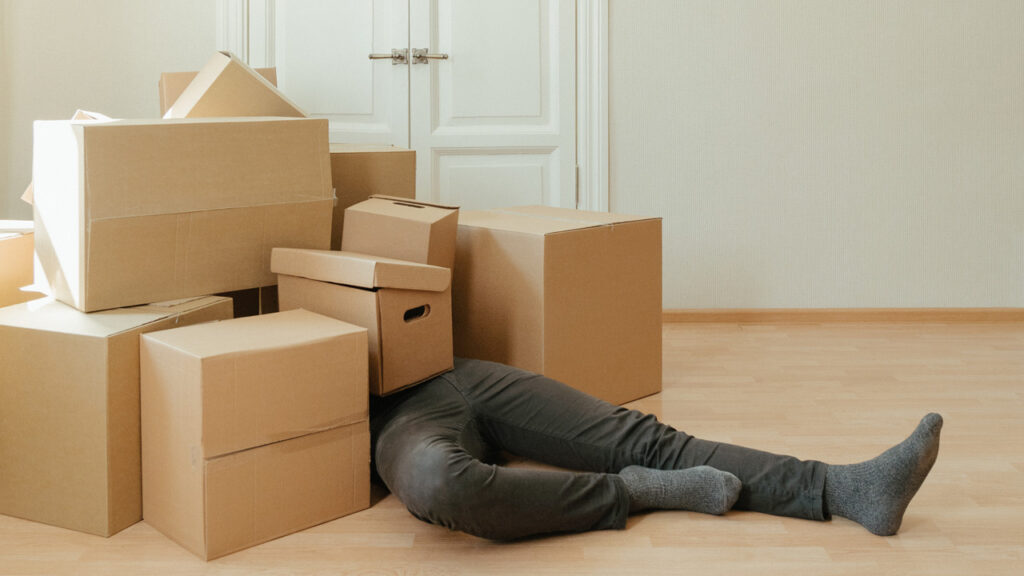Moving to a new home can be an overwhelming experience, but there are ways to make it less stressful. And it starts with sorting your belongings, planning a moving schedule and finances, and mentally strengthening the family before the move date.
There are a few other aspects to keep in mind as well. In this article, we would discuss the best methods to help making your move easy. The tips will help you stay fully organized and ready for the big move, so you can transition into your new home easily.
Start Planning Early
It’s never too early to start planning for your big move. The sooner you begin, the more time you’ll have to organize and tackle each aspect of the process. Start by creating a comprehensive moving checklist, setting important deadlines, and establishing a realistic timeline. By doing this, you can avoid last-minute panic and ensure that every stage of your move is executed smoothly.
Prepare a Checklist
A checklist ensures a smooth and stress-free move when relocating to a new home. The process of moving can be overwhelming, and it’s easy to forget essential details. A checklist helps to keep everything organized and on track.
When creating your moving home checklist, you must identify all the tasks you need to accomplish before the move date. These tasks may include packing, organizing belongings, hiring a moving company or renting a truck, notifying utility companies, and other service providers about the change of address etc.
It’s essential to break down each task into smaller, more manageable steps. For instance, you can break down packing by room or categories such as clothes, books, and kitchenware. This makes it easier to stay motivated and focused and track progress.
After creating your checklist, it’s vital to review it regularly to ensure you’re on track. Depending on your preparations, you can choose to update the checklist if required.
Create a Detailed Inventory
It involves creating a detailed list of all the items you intend to take to your new home. You can use it to ensure that all items are packed, loaded onto the moving truck, and unloaded at your new place.
Taking inventory also lets you evaluate the number of items and determine the required packing materials. It also helps you identify things you may want to sell, donate, or dispose of, reducing the number of items you’ll need to move. This process can simplify the moving process, saving time and reducing expenses.
For ease, categorize your belongings into different groups such as clothing, books, electronics, and kitchenware. As you create your list, it’s a good idea to label each item or group of objects and note their condition. Maintaining a detailed inventory list can also help you keep track of your belongings during the move.
Also Read: How to Move Heavy Furniture by Yourself
Contact a Moving Company
A reliable moving company can offer various services that make your move less tiring and more manageable. It’s essential to research and choose a reputable moving company that’s licensed, insured, and with a good track record. You can ask for recommendations from friends and family, or search for reviews online to narrow your options.
After you have a list of potential movers, contact them to get quotes and discuss your unique needs. Inquire about the services they provide, their availability, and their pricing structure. Additionally, ask about any extra charges such as packing materials fees, fuel surcharges, or fees for navigating stairs or elevators. Understand the timeline and services that’ll be provided and clarify any doubts.

Identify a Moving Budget
It’s imperative to estimate the costs of your move to avoid overspending. Research the costs of hiring reliable nationwide movers or renting a truck to establish a realistic moving budget. Consider the distance of your move, the number of belongings you have, and any additional services you may need, such as packing and unpacking.
You should also factor in any other expenses related to your move such as travel costs, storage fees, and insurance coverage and taxes. Remember to factor in unexpected expenses, such as damage to your belongings during the move, that may arise due to negligence.
Once you have a clear idea of the costs involved, sticking to your budget is important. Be mindful of your expenses and track your spending. Consider ways to save money such as packing your belongings yourself, using free packing materials, or scheduling your move during the off-season.
Declutter Your Belongings and Pack
When preparing for a house move, one crucial to declutter your belongings. This involves reviewing your possessions and deciding what items to keep, donate, or sell. By decluttering, you can avoid carrying unnecessary items to your new home, reducing the cost of moving and making unpacking easier.
If you plan to take any appliances with you, it’s vital to ensure they’re in good working condition and make necessary arrangements for installation in the new home beforehand.
Pack Smart and Label Boxes Clearly

When it comes to packing for a house move, paying attention to labeling moving boxes can make a world of difference. Make sure you label each box clearly with both its contents and even the designated room at your new residence. This can be labels that say Fragile, Handle with care or the Priority level” This will facilitate the movers or you to handle the belongings in the right way. You can also use different color labels for moving boxes.
Keep Important Documents Safe
Make sure all crucial documents are stored securely before and during the move. Gather items such as passports, birth certificates, social security cards, property deeds, vehicle registration papers, etc., and consider keeping them in a fire-resistant box. You can create electronic files of your documents and store them on the cloud. You must always keep an eye on the documents.
Switching Utilities and Change of Address
Taking care of utilities and bills is crucial for a seamless transition when moving. Before you move, you should research the available utility service providers in the new area and try to contact them in advance. You should also arrange for your water and sewer services and pay all the overdue bills.
Also, remember to update your mailing address with relevant parties such as banks and insurance agencies to avoid potential complications from misdirected mail or missed bills.
Inspect the Property You’re Moving Into
Before moving in, get the complete property inspection done to ensure everything is in working order. Move-in inspection becomes even more important if you’re moving into a rental property because disputes often arise between tenant and landlord at the end of the lease term.

Common Mistakes to Avoid When Relocating Home
- Not taking (and comparing) price quotes from different moving companies
- Not hiring a trusted and experienced moving company. And not confirming the complete process from the mover you have hired
- Not asking important questions about estimates (whether it is binding or non-binding?), extra fees for oversized items, fuel surcharges, etc
- Preparing the checklist and labeling the boxes at the last minute
- Or not making inventory and labeling all the boxes for convenience
- Packing the items (such as alcohol, batteries, gasoline, weapons, or houseplants) that moving companies wouldn’t move
- Not reading the document “Your Rights and Responsibilities When You Move”
- Not verifying the mover company’s registrations (when moving from one state to another) on the FMCSA website
Also Read:
Helpful Tips to Moving with Pets Carefully and Hassle-FreeFAQs About Moving House
It depends. If you have some experience of packing the item, you can DIY it. Otherwise, we recommend hiring a pro. If you’re DIYing it, consider factors like time, budget (for buying things like boxes, tapes, permanent markers for labeling, plastic bags, bubble wraps, etc.), and difficulties you may face in packing fragile and valuable items.
Yes, purchasing moving insurance is highly recommended. It will cover any damage/loss of your valuable items during the moving process.
Use a permanent marker to label. Label the top and at least one other side of each box, so you can identify the contents without having to move the boxes around. Write short and descriptive labels.
Use good quality packing materials — such as bubble wrap, packing paper, and sturdy boxes — to pack valuable and fragile items. To keep such items safe during moving time, pack each fragile item separately. Use bubble wrap, foam, or crumpled packing paper to fill any empty spaces in the box you have packed a fragile item. Label the box as “Fragile” / “Handle with Care” in large and bold letters to avoid mishandling.
Bottom Line
Following the guide above and double for check everything can make your moving process easier and less stressful. This guide, if followed, should help you to be appropriately prepared and quickly settled into your new home.
Follow Homecrux on Google News!




